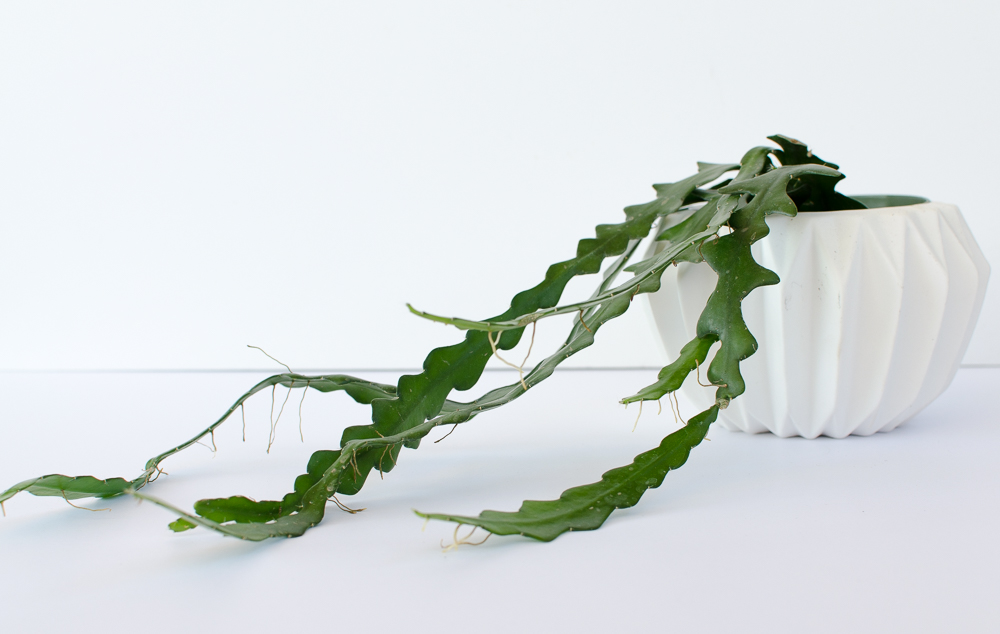Elements of plant care: choosing the right container
In my opinion, part of the fun of keeping houseplants is finding the perfect pot to complement your style and your plant. There are so many stylish options out there, especially now that houseplants are "in" again! However, the options can seem endless, and it may even seem overwhelming at times trying to choose the best kind of container for your plant. When picking a container, I look at three aspects: if the pot has drainage holes, what size I need, and what material is best.
Drainage: A surefire way to kill your plant quickly is by putting it in a pot with no drainage holes. Why are drainage holes so important? They allow any excess water that the soil and roots don’t absorb to drain out. Without drainage, the water has no place to go and instead over-saturates the soil or stagnates at the bottom of the planter, possibly causing irreparable damage to the roots (aka root rot). I don't recommend putting gravel at the bottom before repotting, either, as water can still collect and oversaturate soil. Never fear, though! The gorgeous planters without drainage holes are called "cache" pots, aka catch pots, and the idea is to keep your plant a plain plastic nursery pot and plop it right in the cache pot. Just make sure you take out the nursery pot when you water so it can fully drain. Remember, plants don't like wet feet! Another option with cache pots - especially if they're made of ceramic - is to drill holes. I won't get into specifics about drilling, but there are a bunch of great YouTube tutorials on the subject! FYI, if you want to take the chance and plant your green buddy directly in a pot with no drainage holes, that's totally your choice... hopefully you are a bit more experienced with houseplants and are confident with your watering skills!
My zig zag cactus is still in it's nursery pot, which sits in this geometrical cache pot.
Size: When I buy a plant, I first look to see if it's "rootbound" - if there are any roots sneaking out of the drainage holes, or bulging over the top of the soil, it means the roots no longer have room in their current container and need a larger space to spread. In this case, you should repot into a container at least 2" bigger than the nursery pot. For example, if you have a rootbound plant in a 4" pot, pick a 6" pot. Many plants are rootbound when you purchase them from a nursery, so 8/10 times I end up having to pot up a larger size. If the plant isn’t rootbound, there’s no need to pot up a size. The other side of the coin is making sure you don't have a container that's too large for the plant. A plant in a large container will expel energy into making new roots to fill the space, resulting in slow foliage growth. A pot that's too large also means that the extra soil will hold on to more water than the plant needs, which can result in root rot. The root to soil ration should be balanced evenly. If you're going the route of a cache pot like I mentioned above, and the pot is rootbound, you can buy nursery pots in all sizes! Most garden centers carry them and there are multi-packs available on Amazon.
Material: Now we come to the age-old question: plastic or terra cotta? I get this question a lot and I believe it depends on the plant, personal preference, and maybe even how heavy-handed you are with watering. Some people swear by terra cotta pots for all of their plants, and some people hate them and only use plastic. Let's discuss the pros and cons. First of all, terra cotta pots are usually cheaper than plastic or glazed ceramic containers, and they're readily available at almost any nursery, hardware store, or craft store. They also have an earthy, bohemian look if that's your thing! The clay they're made of absorbs any excess water and quickly wicks it away from the roots. This is great for plants that like their soil on the drier side - like cacti - and also helps prevent root rot. With terra cotta pots, you rarely have to worry about watering too much, so they're ideal for a chronic over-waterer. Some negatives about terra cotta are that you will have to water your plants more often, especially if you're in a warm, dry climate (read about how temperature and humidity play a big role in watering from my previous post here). These pots may also not be a good choice for some tropical plants that need constantly moist soil. Additionally, some people don't like the way terra cotta ages, as they tend to absorb the salts and chemicals from tap water, leaving white rings around the pot. I personally like this look, but it's not for everyone.
Terra cotta pots are the perfect choice for succulents and cacti!
As you can see, there's definitely some decision making that goes into making the best choice of containers for your plants! Personally, I keep all of my succulents, cacti, snake plants, ZZ plants, and ficus trees in terra cotta because they do well when the soil is allowed to dry out between waterings. I also use terra cotta when I'm rehabbing a plant that is suffering from root rot. Many of my moisture-loving plants like calathea species and ferns stay in plastic pots, and so do my plants that are in cache plants.


